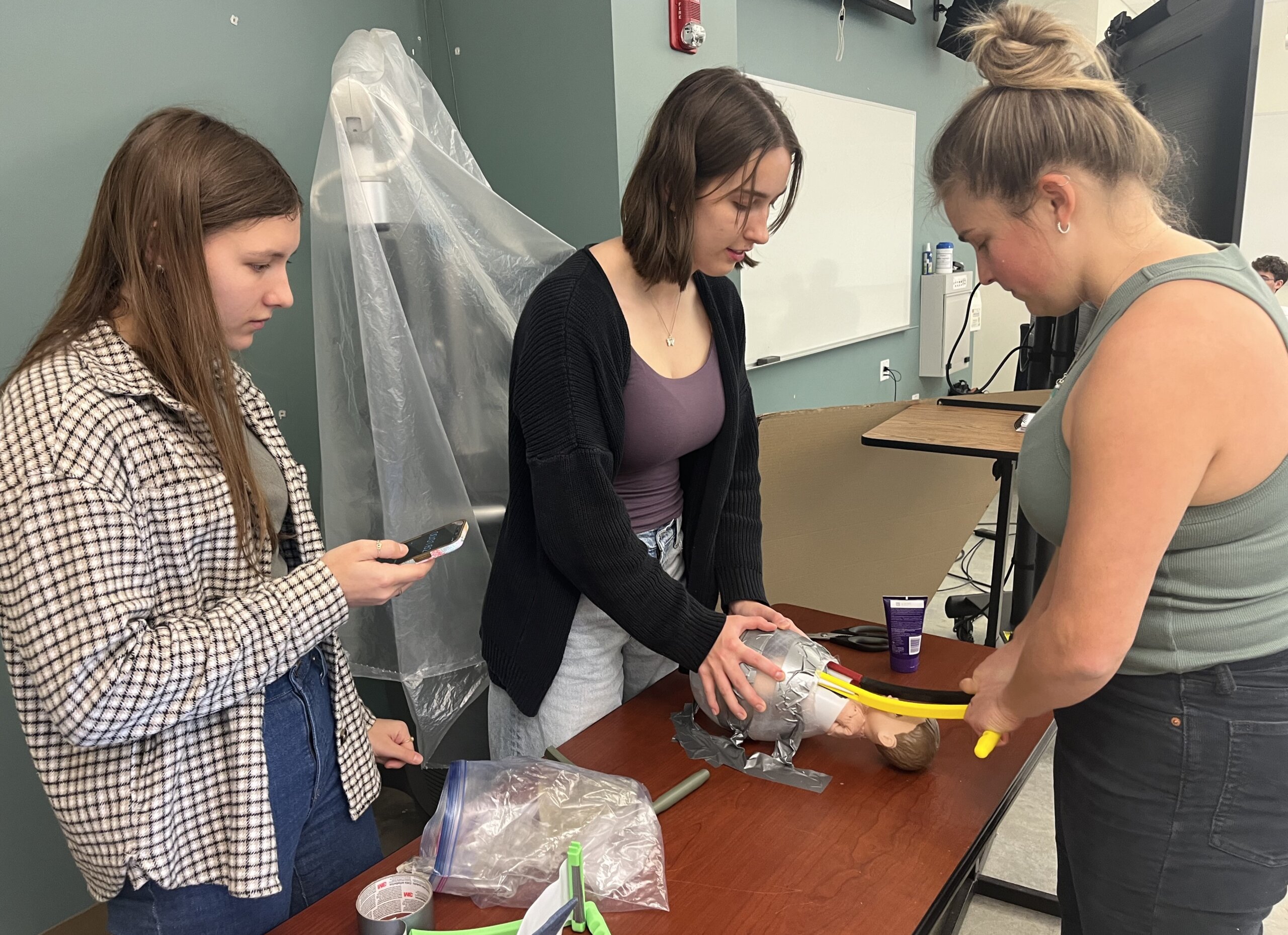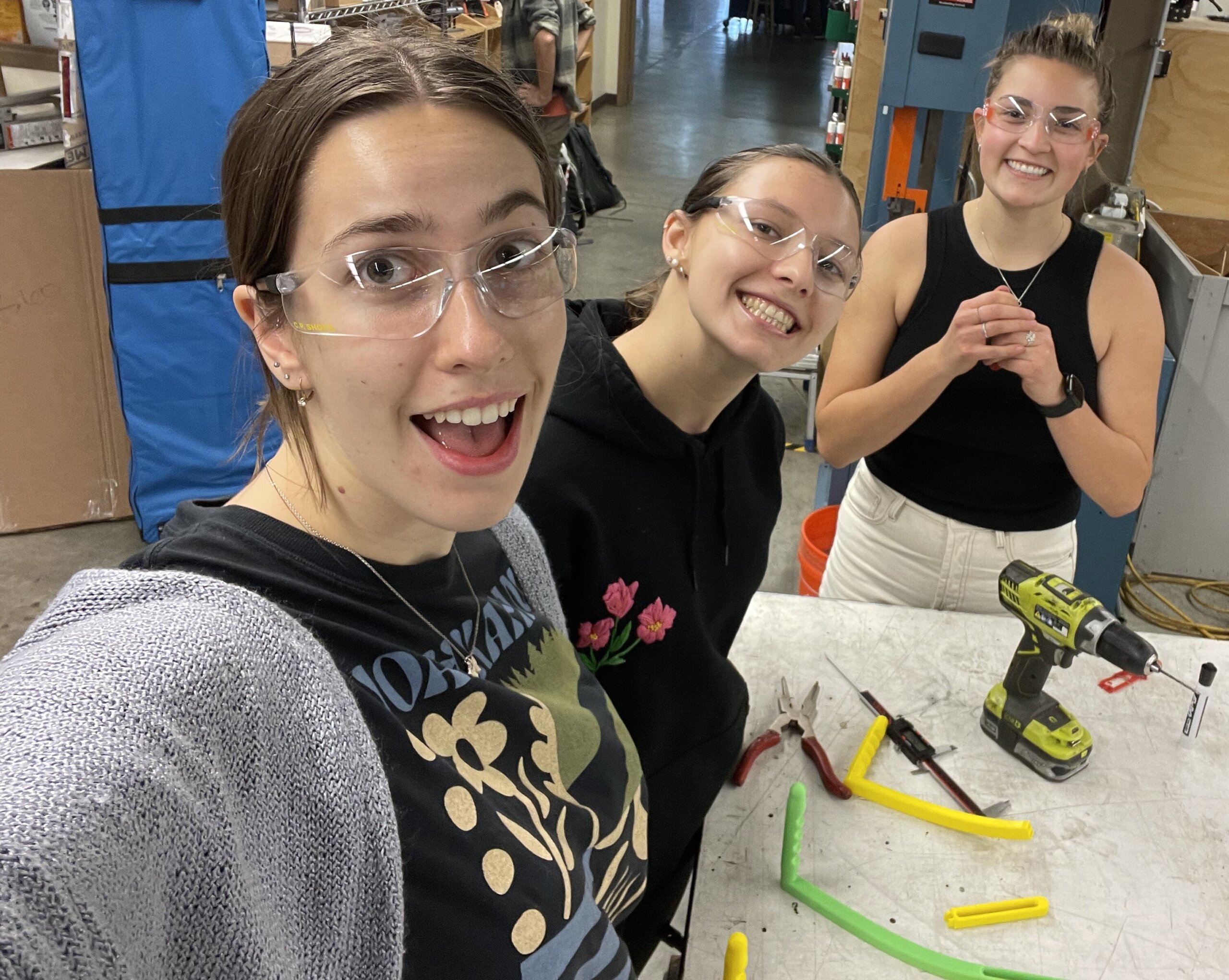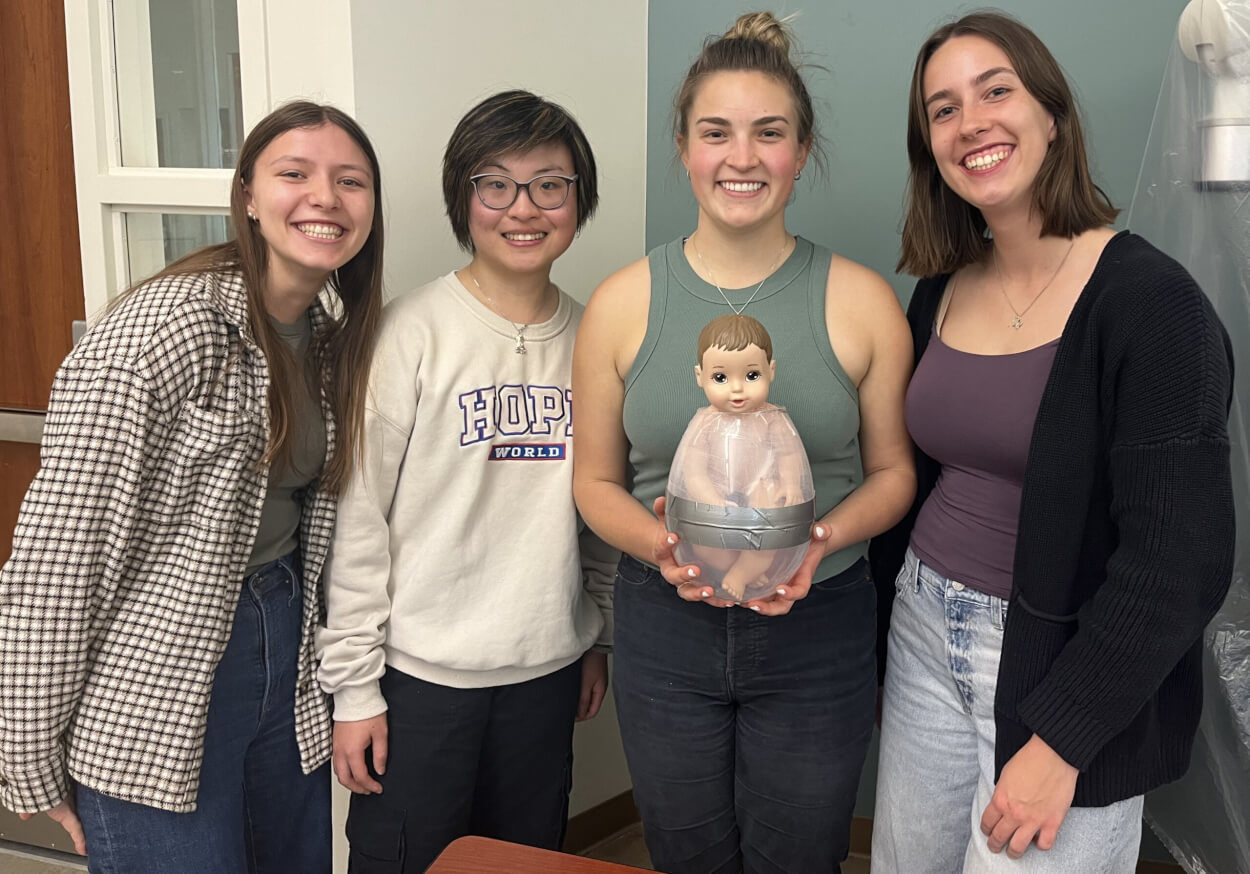In their summer clinical immersion at a hospital’s maternity ward, two biomedical engineering students encountered the complex realities of childbirth, including the use of tools for newborns in distress that some consider archaic at best.
The students became determined to develop a device that provides an alternative to forceps and vacuums, aiming to enhance the safety of mothers and newborns while offering essential support to doctors.
“It was shocking to learn that the tools they use in assisted childbirths have not changed since the 1500s,” said Riley Gordon who participated in the Biomedical Clinical Engineering Partnership (BiCEP) program with teammate Kayla Lovejoy.
After collecting feedback from their clinical mentors at Sierra Vista Regional Medical Center, Gordon and Lovejoy spent three weeks developing a prototype. Their design fused elements of a sling and shoehorn, with the goal of alleviating pressure on the baby’s head, gently constricting the shoulders and aiding delivery by assisting in the baby’s extraction.
“Although assisted deliveries account for only 3% of births, the sheer volume of births worldwide translates to millions of babies born, and we knew there had to be a better way to help,” Gordon said.
In the fall, a new cohort of students launched their senior project, building on the foundational work of Gordon and Lovejoy with the goal of inspiring the medical community to embrace modernized devices like their own.

Speedy delivery
During a recent Tuesday session in Professor Michael Whitt’s senior project class, biomedical engineering students Maddie Mumford, Brittany Trinh, Jenna Eissmann and Rachel Rowe gathered around a table, conducting tests with a baby doll and giant plastic egg.
Eissmann and Mumford positioned the baby inside the egg that simulated a uterus while carefully situating their sling-like device beneath the baby. Mumford held the egg steady as Eissmann gripped the ergonomically designed handles of the device and quickly pulled.
“2.91 seconds!” shouted Rowe, logging the time on her laptop during the pretend delivery as Trinh observed, highlighting the device’s critical speed in emergencies and its durability under significant pressure and pulling.
After two rounds of testing, they achieved even faster results.
Mumford, Trinh, Eissmann and Rowe opted to build upon the summer groundwork laid by the BiCEP students for their senior project, driven by the potential to address a significant gap in women’s health.
After consulting with obstetricians-gynecologists, they identified a crucial need for a device designed to manage shoulder dystocia – a condition in which a baby’s shoulders become lodged during vaginal delivery, necessitating reliance on 25-30 manual maneuvers by doctors.
“Our device aims to standardize care,” said Eissmann, underscoring the importance of consistent management for shoulder dystocia. Mumford highlighted an added advantage: the device’s potential to prevent common infant injuries, such as clavicle fractures and brachial plexus damage, and reduce the need for C-sections.
Following the identification of the project’s goals, the team faced challenges that included getting clinical delivery data, understanding the anatomy of the pelvis during childbirth and catering to the distinct needs of three key stakeholders: the doctor, the mother and the infant.
“This project was a great lesson in trial and error,” Rowe said. “I learned not to let setbacks get me down but to use them as building blocks for growth.”

Memorable moments
As the project progressed, the team grew closer, united by their shared passion and often finding reasons to smile together.
Rowe reminisced about their first foray into the machine shop when they started manufacturing their device. “None of us knew what we were doing, but we figured it out,” she said, reflecting on the experience. “It felt more like an adventure than work.”
Eissmann remembered walking around campus carrying the baby doll and oversized egg. “Not my best look,” she said with a laugh.
Once, while on campus, Lovejoy and Gordon noticed the doll and promptly caught up with the team now carrying on their project. “I’d know that child anywhere,” said Gordon, chuckling.
Gordon and Eissmann also discussed their individual experiences preparing the gel that replicated uterine tissue, a procedure involving heating it in an oven before carefully pouring it into the egg to line the interior for testing purposes.
As they reflected on the unconventional nature of their work, Eissmann and Mumford shared their perspectives.
Eissmann likened herself to a character from a popular Disney film. “I felt like Sid from ‘Toy Story’ at times,” she said, drawing a humorous comparison to the movie’s infamous toy tinkerer.
Meanwhile, Mumford relished the opportunity to delve into the design and creative aspects of engineering.
“Until now, it’s mostly been theoretical,” she said, “but this project allowed for a fun blend of analytical and critical thinking. Adding to her thoughts, she emphasized the team’s resilience. “We faced and overcame challenges, demonstrating strong teamwork throughout the process.”
Whitt commended the device developed by the two teams for its potential.
“Our students are remarkably intelligent and inventive,” he said. “I’m eager to see us pursue patents for more of these innovative ideas.”
By Emily Slater


